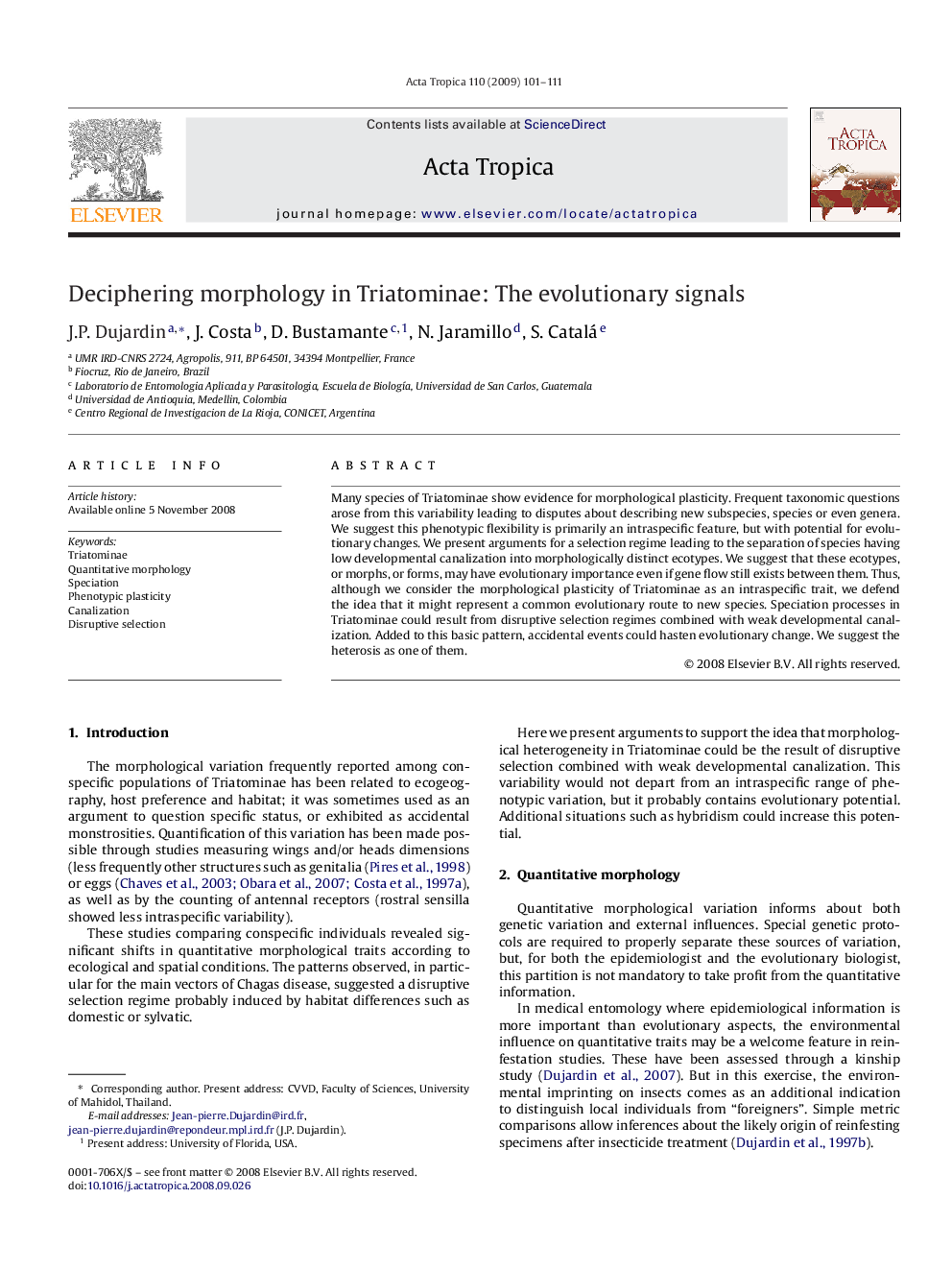| Article ID | Journal | Published Year | Pages | File Type |
|---|---|---|---|---|
| 3394101 | Acta Tropica | 2009 | 11 Pages |
Many species of Triatominae show evidence for morphological plasticity. Frequent taxonomic questions arose from this variability leading to disputes about describing new subspecies, species or even genera. We suggest this phenotypic flexibility is primarily an intraspecific feature, but with potential for evolutionary changes. We present arguments for a selection regime leading to the separation of species having low developmental canalization into morphologically distinct ecotypes. We suggest that these ecotypes, or morphs, or forms, may have evolutionary importance even if gene flow still exists between them. Thus, although we consider the morphological plasticity of Triatominae as an intraspecific trait, we defend the idea that it might represent a common evolutionary route to new species. Speciation processes in Triatominae could result from disruptive selection regimes combined with weak developmental canalization. Added to this basic pattern, accidental events could hasten evolutionary change. We suggest the heterosis as one of them.
